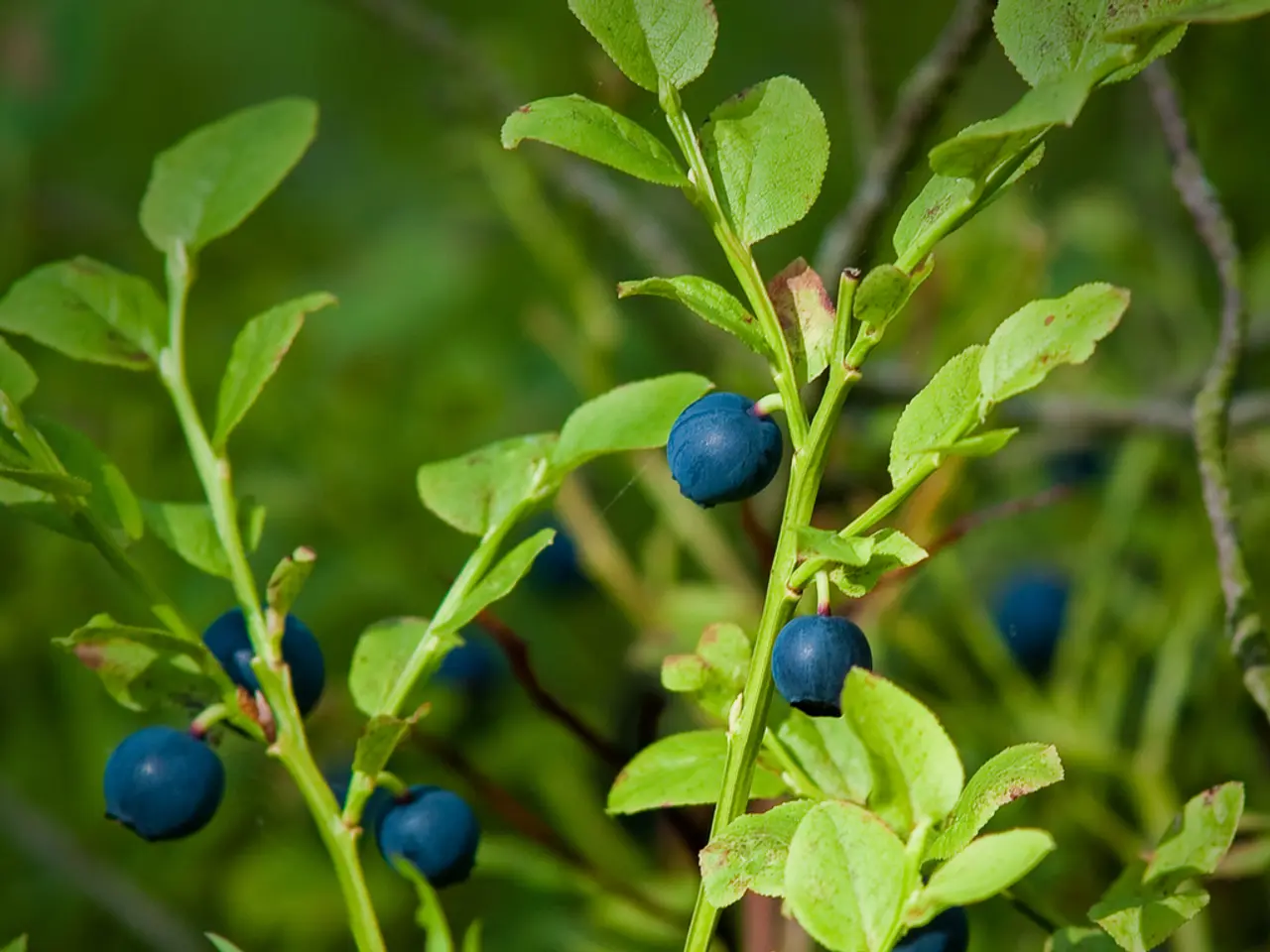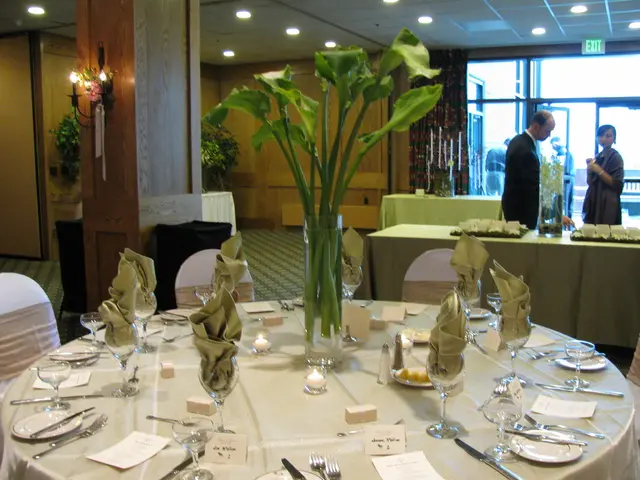Eradicating Pokeweed: Strategies for Removing Pokeberry Shrubs
In the world of gardening and agriculture, one plant that requires careful attention is the pokeweed (Phytolacca americana). This native plant, known for its red, woody stem and long, oval leaves, grows in disturbed soils such as fields and pastures.
Pokeweed is notorious for its deep roots, making manual removal a challenging task. Pulling pokeweed is not usually successful in removing the roots. However, it can be controlled effectively through various methods.
Safe methods for controlling Pokeweed growth include spot spraying with glyphosate herbicide from bud to bloom stages before fruit set, using Group 4 growth regulator herbicides, and mowing in established perennial forages such as alfalfa. Herbicide timing is critical, with applications after mid-June providing better control. In crops like sorghum and soybean, specific POST systemic herbicides including glyphosate are effective, while perennial forages and spring-seeded small grains can help manage pokeweed through cultural practices.
Alternative non-chemical methods like flame weeding can work on broadleaf weeds but may be less effective for deep-rooted plants like pokeweed and require fire safety precautions. Smothering weeds with black plastic or landscape fabric or repeated treatment with boiling water can kill or suppress weeds in smaller settings.
Regarding the safe use of pokeweed berries, it is essential to exercise high caution. Pokeweed berries contain toxic compounds, especially in stems, roots, and mature leaves. Historically, young pokeweed shoots (before berries form) are sometimes boiled repeatedly with water changes to reduce toxicity for culinary use, such as poke salad, but improper preparation can be dangerous and is generally not recommended without expert guidance. Pokeweed berries can be used safely for dyeing purposes, producing a purple or reddish dye. This use involves extracting pigment without ingestion, posing less risk.
Because of its toxicity, pokeweed berries are not considered safe for food use without expert processing. They are better suited for non-food uses like natural dyes, where toxicity is not a concern. It is advisable to remove pokeweed berries to prevent the spread of the plant. However, it is important to be careful when using pokeweed berries as they contain compounds that can cause toxic reactions.
In summary, managing pokeweed requires a combination of herbicides and cultural practices, with timing being crucial for successful control. When it comes to pokeweed berries, they can be used safely for dyeing purposes but should be avoided for culinary use without expert guidance. For more information on pokeweed control and safe usage, consult your local extension services or garden centres.
Managing pokeweed effectively involves not only herbicide applications but also cultural practices, such as mowing in perennial forages. The use of pokeweed berries for dyeing purposes can be safe, as long as the pigment extraction is done without ingestion.
When handling pokeweed berries, caution should be exercised due to their toxic compounds, especially in stems, roots, and mature leaves. Improper preparation for culinary use can be dangerous, while their use for natural dyes poses less risk.




